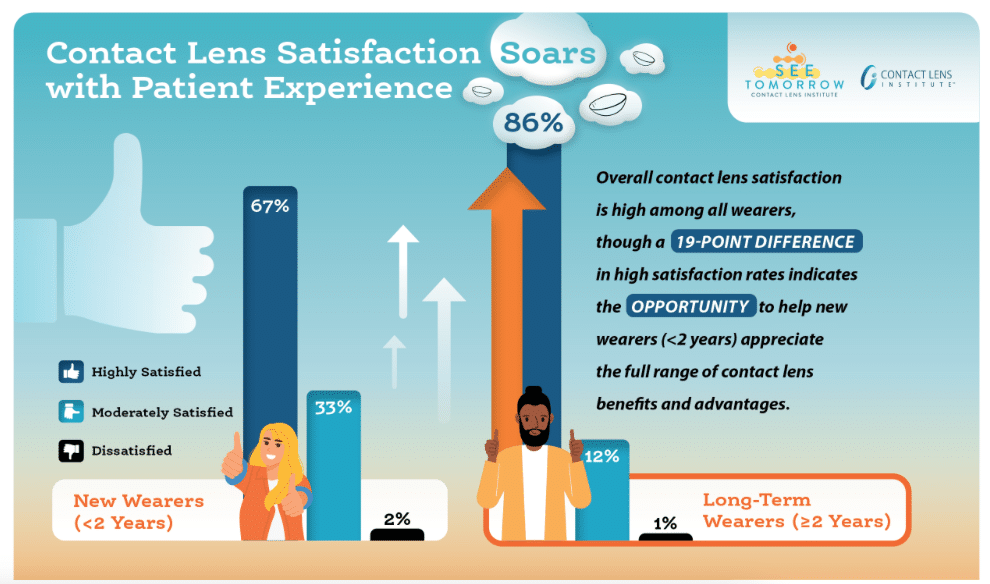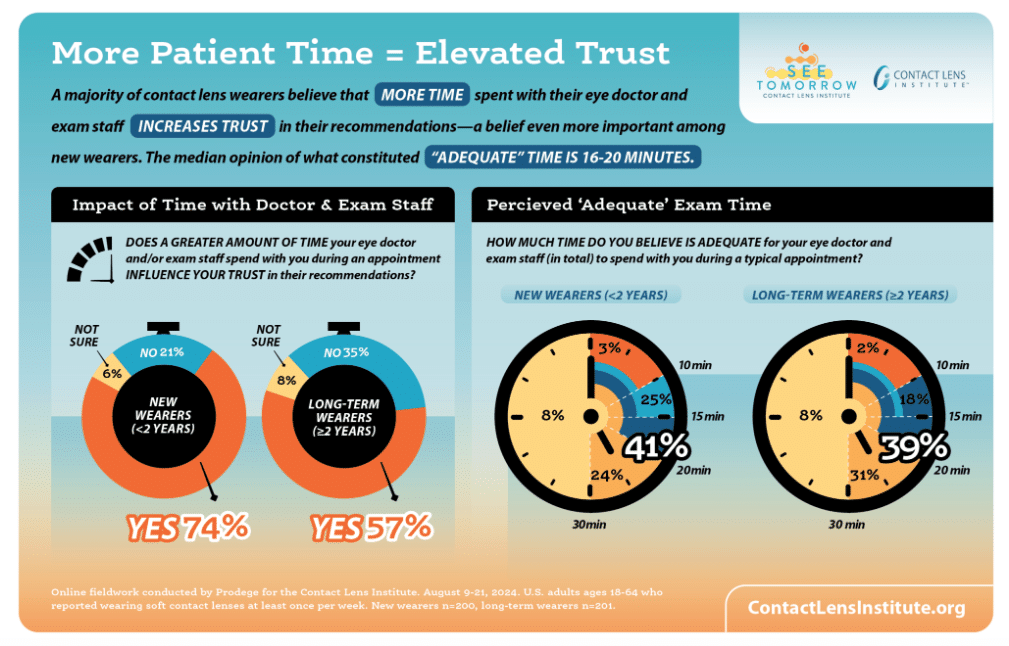A nationwide survey of American eyecare practices has revealed several actions with the potential to increase retention rates among new contact-lens wearers.
Consumer data from the Contact Lens Institute (CLI) shows that new (<2 years) and long-term (≥2 years) soft contact-lens users share many similarities regarding factors that influence their decision to continue wear. Yet there are several differences that optometry professionals can use to help maintain satisfaction among more recently fitted patients.
This is particularly important when prior studies have shown that one in four wearers may drop out in the first year alone.
When asked about doctor and staff actions to promote continued wear, contact lens patients identified three as most influential: making sure that contact lens prescriptions are updated to adapt to lifestyle changes (69% new wearers, 57% long-term wearers), providing trial lenses for new prescriptions (69% new wearers, 66% long-term wearers), and making sure people understand contact lens care (67% new wearers, 51% long-term wearers).
While previous CLI research illustrated the importance of engaging the entire practice staff in patient communication, the latest data reinforces the essential nature of taking an all-hands approach.


Among long-term wearers, 59% say that their eye specialist extremely or greatly influences the decision to keep using contact lenses, with 52% reporting the same for their optician, 35% for exam staff technicians, 25% for optical staff, and 21% for administrative staff.
Notably, these percentages soar for new wearers by double digits – 74% for their eye doctor, 64% for the optician, 53% for exam staff, 53% for optical staff, and 44% for administrators such as receptionists.
Wearers also say the greater amount of time spent with the specialist and exam staff increases trust in their recommendations. This is more prominent among new wearers (74%), although still prevalent with long-term wearers (57%). The median opinion of what constituted “adequate” total exam time is 16-20 minutes for both groups.
“Broadly speaking, we found that new wearers benefit from more personalised care to meet their lifestyle needs, more attention from the entire practice team, and more encouragement and training,” said Mr Stan Rogaski, CLI’s executive director.
“That translates into happy, healthy patients whose satisfaction ratings skyrocket once they cross the two-year mark, turning them into lifelong contact lens fans.”
More reading
New software in Cylite’s HP-OCT allows contact lens design
Aussie professor supports John Lennon’s bizarre cannabis-contact lens claim
Latest soft toric contact lens insights for optometrists




